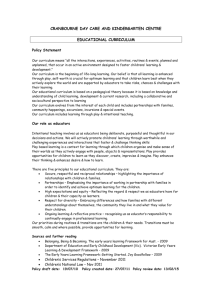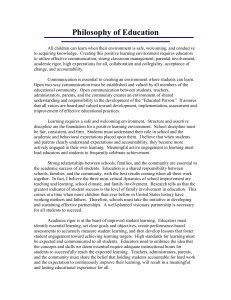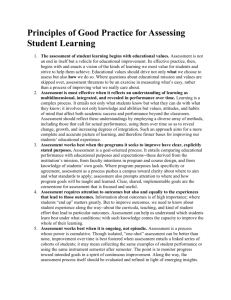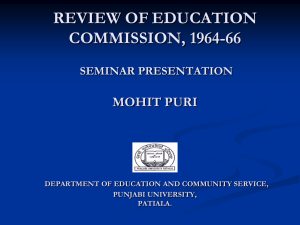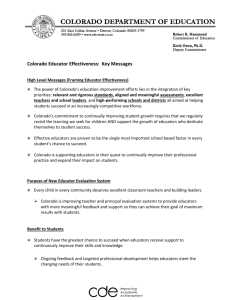Data Use Guide - TELL Colorado
advertisement
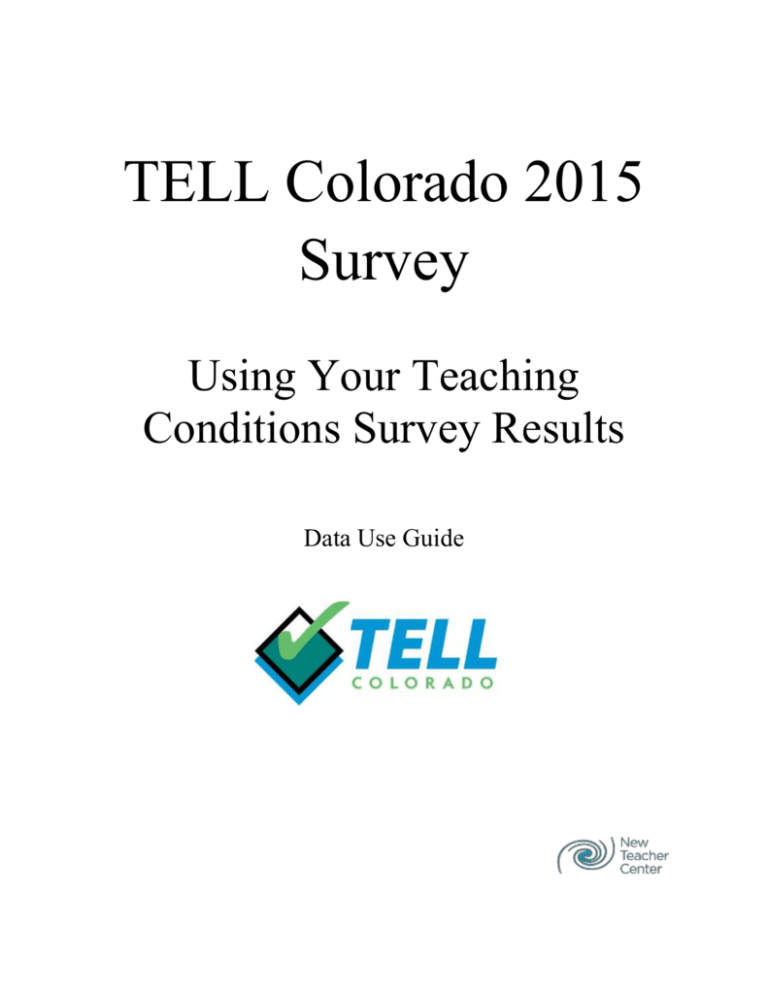
TELL Colorado 2015 Survey Using Your Teaching Conditions Survey Results Data Use Guide Teaching conditions are critical to educator success and satisfaction. The TELL (Teaching, Empowering, Leading, and Learning) Colorado Survey provides data to schools and the district about whether educators have the supportive school environments necessary for them to be successful with students and to remain in their schools. The data represents the perceptions of those who understand teaching conditions best—the educators who experience them every day. But assessing teaching conditions differs from looking at other neutral or quantifiable data points (like student test scores) in that getting honest, authentic input and dialogue can be challenging, especially in schools where the basic building blocks of positive conditions—trust, time and leadership—are not in place. Using the information in a positive way toward school improvement is critical, and these guidelines are meant for educators at multiple levels to efficiently and effectively utilize the Survey data as an artifact to assist in self-reflection and goal setting. As this type of survey data becomes more common, using it appropriately and constructively will become even more important in Colorado and across the nation. Please consider the following when analyzing and using the survey results: 1. Teaching conditions are an area for school improvement, not accountability. Teaching conditions are about schools, and all members of the school community contribute to the formation of the school culture, whether it be purposeful or accidental. Schools are encouraged to use the data to guide school improvement planning and to then assess progress toward implementation of collectively developed reforms. NTC strongly cautions against using the Survey to establish high stakes measures of teaching and learning environments. Should educators come to perceive the survey as such, results of future iterations may become skewed. 2. Teaching conditions are not about any one individual and require a community effort to improve. Administrators hold a unique and important place within the school community and have a significant impact on the professional culture in which teachers work. However, many aspects of teaching conditions are beyond the principal’s control. Broader social trends, federal, state and district policies all impact how educators view and operate within their school and classroom. Conditions are about schools, not about individuals, so no single person should be viewed as responsible for creating or reforming school culture alone. No questions on this survey were about the principal. All questions about school leadership were defined specifically as a group of individuals or team within the school. 3. Perceptual data are real data. The survey results are perceptual data from educators about the presence of important teaching conditions, and educators’ perceptions are their reality. This does not mean the data is not “valid” or as important as other data sources. Educator perceptions of the culture and context of their school have been linked to student learning, future employment plans, efficacy and motivation. Analyzing and using this information to improve schools is critical and needs to be a part of reform efforts at the school and district levels. However, other data should be used to triangulate these findings and provide additional understanding of these perceptions such as instructional expenditures, proportion of teachers working out of field, teacher/pupil ratio, etc. 4. Conversations need to be structured and safe. Conversations about teaching conditions are often the lifeblood of teachers’ lounges. Having data-driven dialogue about the findings of the survey, the root causes of educator perceptions, and potential reforms requires structure, facilitation, norms and the ability to separate issues from individuals. These are not easy conversations, and they become harder if they are not tackled systematically and in a manner where all faculty can participate in a meaningful and safe way. www.tellcolorado.org Page 1 5. Identify and celebrate positives in addition to considering areas for improvement. Educators have tremendous pride in the work they do, and want to work in a school that allows them to do their best teaching. All schools have successes and challenges to deal with and to draw upon as they assess and improve their context. It is critical that positives are acknowledged and celebrated, while issues are identified and addressed in order to continue moving forward in a positive productive manner. 6. Create a common understanding of what defines and shapes teaching conditions. Anything and everything might be considered a part of teaching conditions. Research shows that broader social trends, media coverage, respect for the profession, local and state policies and more can all influence teachers’ perceptions of their conditions and ultimately their motivation and efficacy as educators. The survey provides input from educators on a host of important research-based teaching conditions as well as areas of support, assessments and accountability, parent and community support, etc. These questions and responses are a starting point, not an ending point for understanding what is important to teachers for them to do their best work. But in order for conversations to be productive, all faculty must come to agreement about what these conditions mean for their own school and context. 7. Focus on what you can solve. Many issues that shape teaching conditions within a school or district are outside of teacher and administrator control, such as federal and state assessment policies or funding. School improvement planning should focus on areas that can be addressed by the school community. Other influences such as federal and state policy, or broader social and community context are areas for the school to think about in concert with others, but a plan with solutions that cannot be reached through the efforts of the school community is not likely to be successful. 8. Solutions can be complex and long term. Teaching conditions are cumulative and engrained. Many years and faculty members helped create them and it will take a similar amount of time for reform. Some solutions may be inexpensive and simple to address, like having a more consistent means of communicating amongst the faculty, while others are resource intensive (class size reduction, integration of technology) or long range (building trust, creating authentic Professional Learning Communities). A school improvement plan must pay attention both to short and long term issues to successfully improve the school environment. www.tellcolorado.org Page 2

